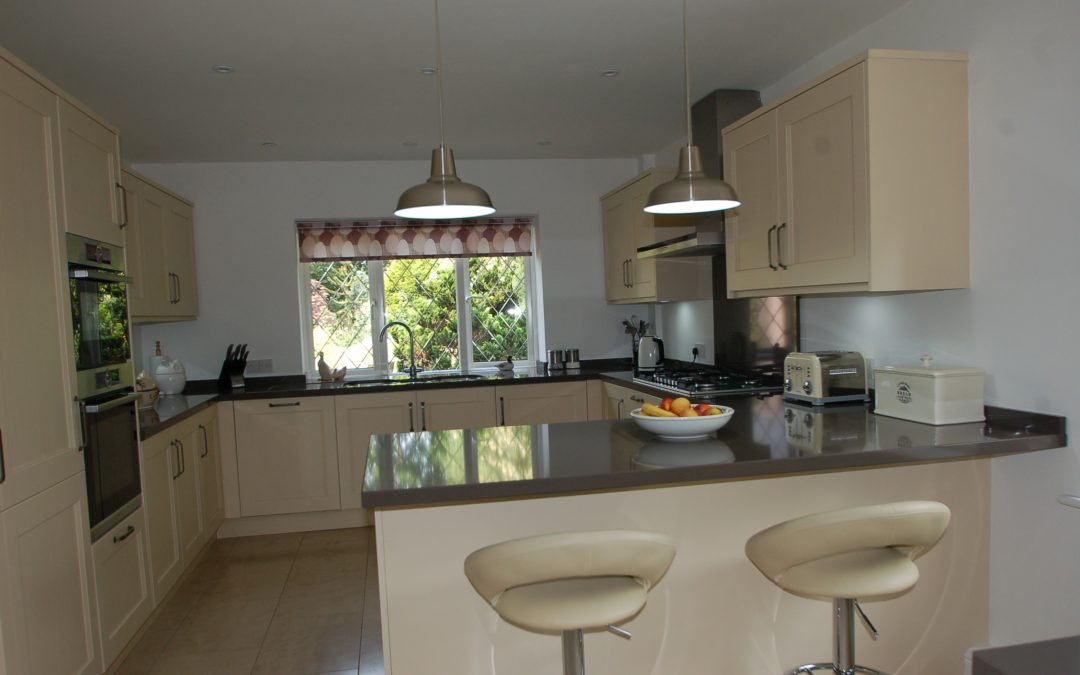Another in my series of ‘Ask the Experts’: Below is an article from Houzz which provides details about what was the “Kitchen Triangle” and how things have changed…
With kitchens evolving into open-plan social hubs, we investigate the impact on traditional layouts.
Since the idea of the kitchen ‘working triangle’ emerged in the 1940s, with the intention of creating a more efficient work space with limited footfall between the three key zones of the sink, oven and fridge, kitchen layouts have been designed around this principle. However, this triangular layout was created with the idea that only one person would be working in the kitchen at any time, rather than for the interactive and collaborative kitchen spaces we desire today. Nowadays, we don’t just cook in the kitchen, we eat, meet, work and socialise together in them.
Therefore, as kitchens evolve to suit our multi-faceted lifestyles, the concept of the working triangle must also adapt – to create a more sociable space that remains efficient. We asked appliance manufacturers, Fisher & Paykel, to help us unravel the changing needs of the kitchen and share ideas on how best to design the space for living, rather than just cooking.
Consider Your Kitchen a Multi-Functional Space
As kitchens become all-encompassing living areas – a space where all cooking, eating, home working and socialising takes place – they are naturally growing in size. And, as more activities mean more people, key appliances such as the fridge, oven and dishwasher need to be spaced further apart in order to allow multiple people to work in the kitchen without getting ‘trapped’.
Living out of drawers is the way forward
Consider a set of drawers in your home. Is the top drawer full of useful essentials, while the third drawer down is stuffed with items you use less frequently? It makes sense that the utensils and appliances we use everyday be placed at waist height as it’s easier for our hands to access them. To increase ease and efficiency in your kitchen still further, consider an ergonomic drawer dishwasher that’s easy to load and requires minimal bending.
Look to Your Cooking Habits to Find the Best Layout
As the range of things we cook changes, so do the tools we require to complete these new tasks. We’re becoming more ambitious in the kitchen so although sometimes we simply want to heat something up, at other times we want to cook an internationally-inspired feast to impress guests. These changing food trends are affecting the appliances we’re adding to our spaces – think teppanyaki grills, combination microwaves and coffee machines – which in turn add to the need for a more sociable layout.
Put your cooking skills on show
As our cooking skills get more creative and our food choices more elaborate, bring an element of the professional kitchen into the domestic space with a scene-stealing island bench where you can perform, create and deliver dishes to impress your guests.
Configure the Appliances to Suit the Way You Live and Work
Kitchen designers have responded to the changing trends in cooking practices and kitchen functions by identifying individual zones for different activities. The oven and hob, for example can be intentionally placed in separate spots to allow two people room to work in a kitchen together. While one dishwasher could be placed by the sink for crockery, another could be fitted near the bar area for glasses. “The concept of distributed appliances revolves around configuring the kitchen to suit the way people live and work,” says Mark Elmore, Fisher & Paykel’s General Manager of Design Integration. A setup like this, which responds to the way we use the kitchen, will bring a social atmosphere into the work area.
Encourage everyone to join in with the chores
Choosing appliances which are super-easy to operate, and fitted at a user-friendly height, will encourage children to help out and get them engaged with all the practices of entertaining from an early age.
Integrate Technology so it Flows Seamlessly
With the popularity of open-plan layouts, our kitchens are becoming more like lounge spaces, with cabinetry looking increasingly like modular furniture placed in the centre of the room rather than fitted around the edges. As a result, technology is required to integrate seamlessly to ensure a tranquil and relaxed finish. So, when installing an appliance like the DishDrawer dishwasher shown here, try fitting it as deep into the cabinetry as as possible so the handles don’t project beyond the line of the bench top.
Pick good-looking appliances that make you look good too
No longer poky and hidden away, kitchens are an opportunity to showcase your personal style and design knowledge. “The kitchen is enjoying an elevation in status,” agrees Simone Stephens, Senior Designer at Fisher & Paykel. “We have seen a considerable shift in what people spend on their kitchens, and in their perception of what the space should be. Today, it is so much more than just a place to prepare food.” Look out for elegant appliances that can be easily maintained and cleaned so they always look their best, and you’ll have a style statement that will continue to impress guests for years.



